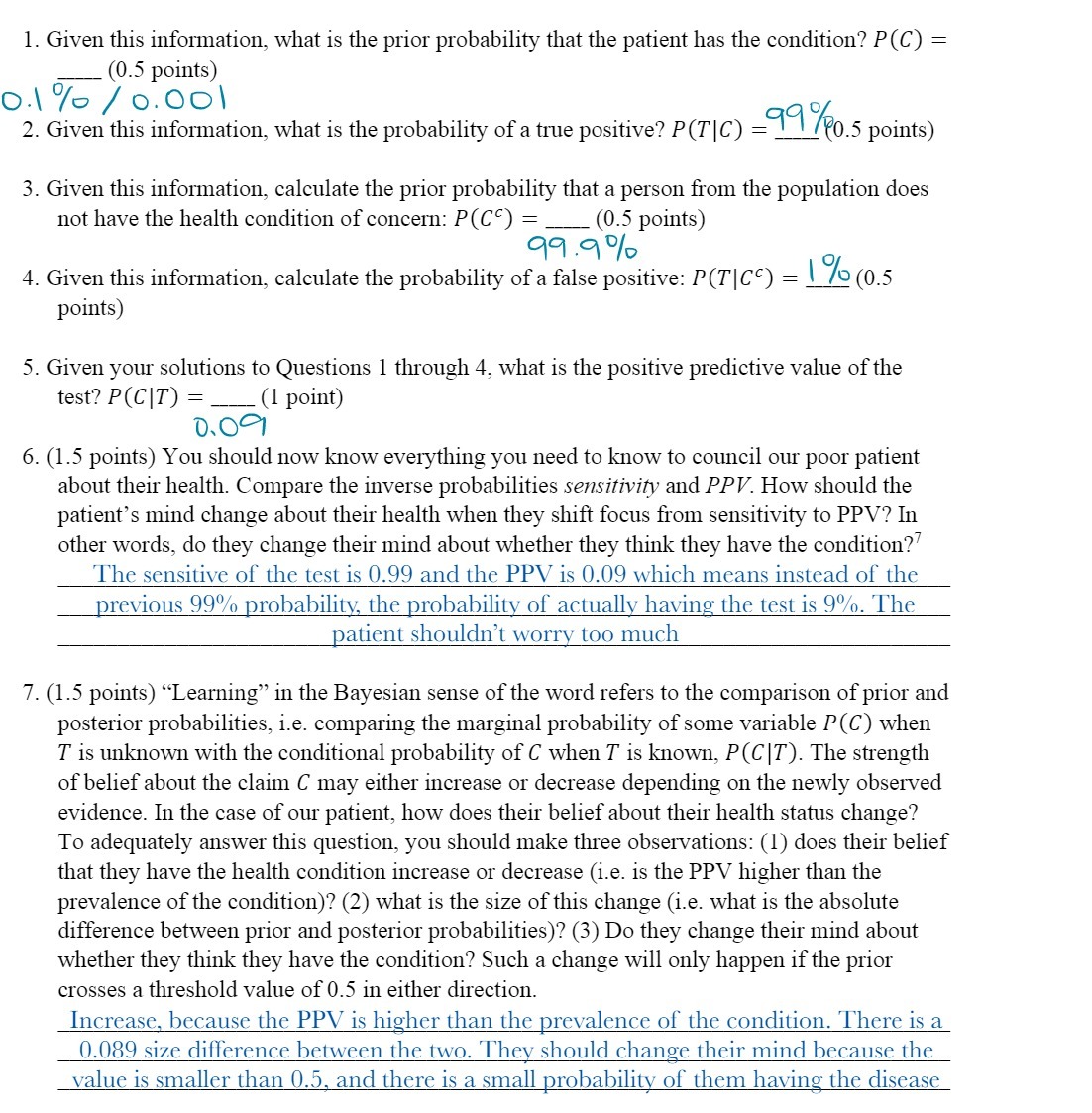
1. Given this information, what is the prior probability that the patient has the condition? P(C) = (0.5 points) 2. Given this information, what is the probability of a true positive? P(T|C) 25' @05 points) 3. Given this information, calculate the prior probability that a person from the population does not have the health condition of concern: P(C ') = (0.5 points) 01! 91% o 4. Given this information, calculate the probability of a false positive: P(T|C') : l l0 (0.5 points) 5. Given your solutions to Questions 1 through 4, what is the positive predictive value of the test? P(C|T) = __ (1 point) 0'00] 6. (1.5 points) You should now know everything you need to know to council our poor patient about their health. Compare the inverse probabilities sensitivity and PPV. How should the patient's mind change about their health when they shift focus from sensitivity to PPV? In other words, do they change their mind about whether they think they have the condition?! The sensitive of the test is 0.99 and the PPV is 0.09 which means instead of the previous 99% probability, the probability of aetuallv having the test is 9%. The patient shouldn't worry too much 7. (1.5 points) \"Learning" in the Bayesian sense of the word refers to the comparison of prior and posterior probabilities, i.e. comparing the marginal probability of some variable P(C) when T is unknown with the conditional probability of C when T is known, P(C IT). The strength of belief about the claim C may either increase or decrease depending on the newly observed evidence. In the case of our patient, how does their belief about their health status change? To adequately answer this question, you should make three observations: (1) does their belief that they have the health condition increase or decrease (i.e. is the PPV higher than the prevalence of the condition)? (2) what is the size of this change (i.e. what is the absolute difference between prior and posterior probabilities)? (3) Do they change their mind about whether they think they have the condition? Such a change will only happen if the prior crosses a threshold value of 0.5 in either direction. Increase because the PPV is hi _ her than the revalence of the condition. There is a 0.089 size difference between the two. Thev should Chan e their mind because the value is smaller than 0.5. and there is a small probabilitv of them having the disease








